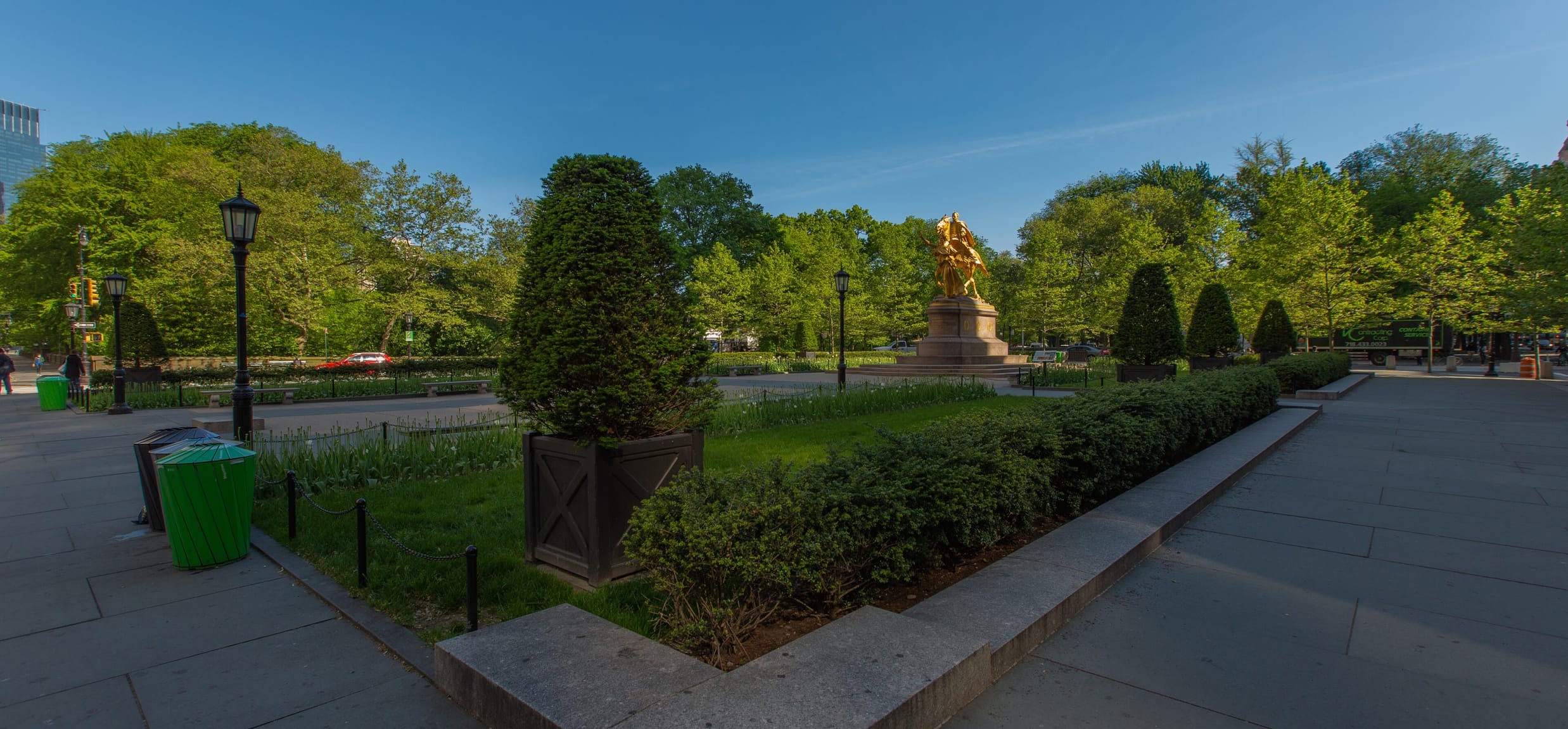Grand Army Plaza

Grand Army Plaza, located at the Park's southeast corner, consists of two symmetrical plazas bisected by 59th Street. On the southern side stands the Pulitzer Fountain and on the northern side is the gilded monument to Union General William Tecumseh Sherman. The site marks a major entrance to the Park and also provides seating and open space in a busy part of Midtown.
Park designers Calvert Vaux and Frederick Law Olmsted originally designed a traffic circle surrounded by trees in this location. As part of their vision of the Park as a rural retreat, they rejected the European tradition of grand park entrances marked by monuments. However, it was not long before members of the public and civic leaders began entertaining plans for elaborate entrances from the leading architects of the era.
The first addition to the area was in 1903, when the City installed the monument to the Civil War General William Tecumseh Sherman by the renowned American artist Augustus Saint-Gaudens. The monument was dedicated on Memorial Day, a holiday that was established by a Union veterans group called the Grand Army of the Republic. Subsequently the area was referred to as Grand Army Plaza.
Inspired by European urban design, American architect Thomas Hastings and Austrian-American architectural sculptor Karl Bitter completely redesigned the area in 1916 to create the two plazas that exist today. The project was funded by the estate of the newspaper publisher Joseph Pulitzer, who before he had died expressed interest in creating a fountain in front of the newly opened Plaza Hotel. Hastings designed a southern plaza with a large, tiered basin fountain topped with a bronze figure of the Roman goddess Pomona by Karl Bitter, a symbol of abundance. The northern plaza was expanded and to create a symmetrical arrangement, the monument to General Sherman was relocated to align with the fountain. The plazas were surrounded by two rows of London plane trees and their original design also incorporated distinctive paving and lamps, columns, and topiarized shrubs. The trees were replaced by Callery pear trees in the late 1970s. In October 2011 an unseasonable snowstorm destroyed every tree in the north plaza, and they were removed.
In 2015 the Central Park Conservancy completed a project to restore the north side of the plaza, based on its historic 1916 design, including installing a double row of London plane trees, new benches, lamps, and paving stones. The work also included the conservation and regilding of the Sherman monument.



